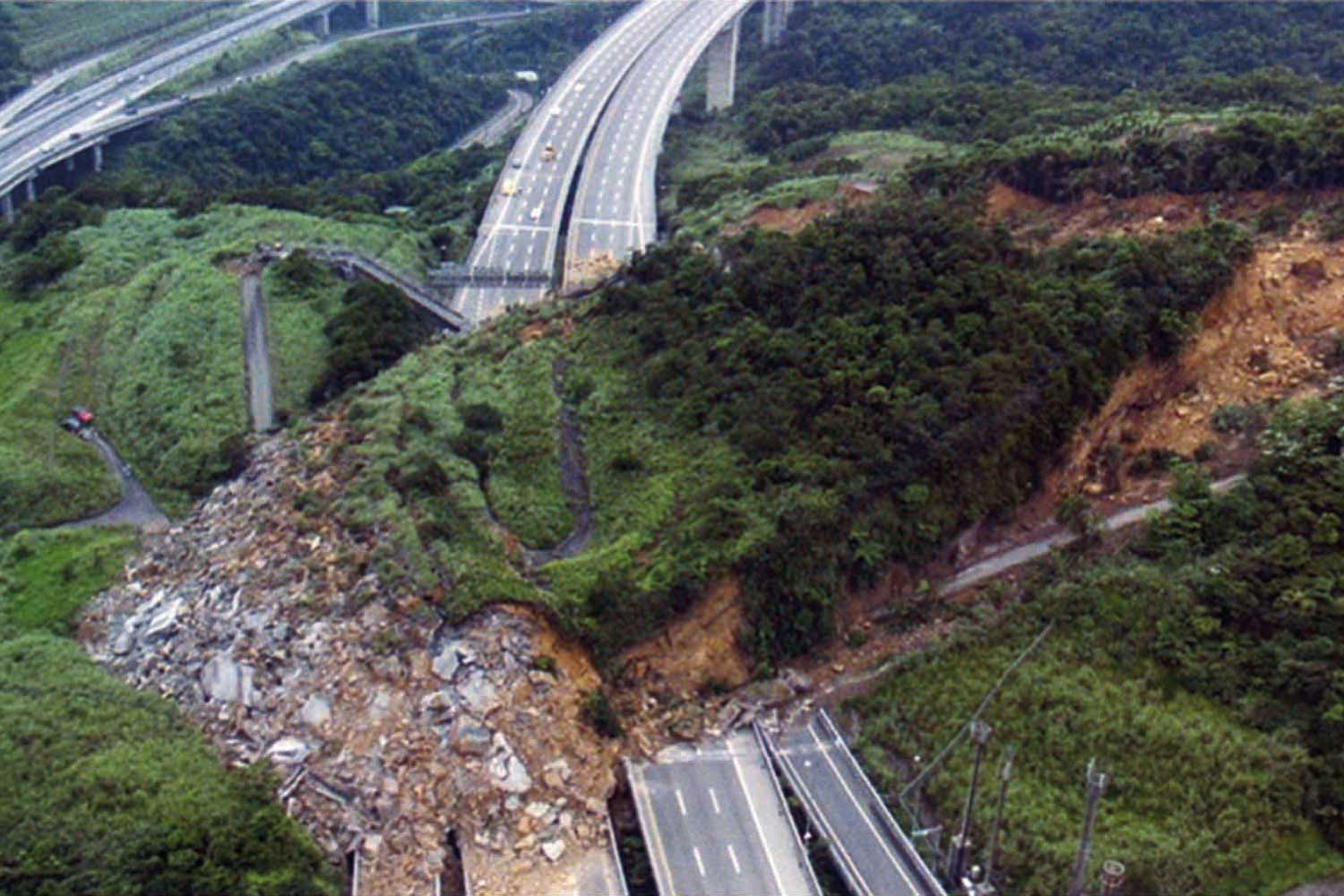Application
Landslides pose a significant hazard, requiring effective prevention methods and detection systems. We will focus on a recent case in a European Country where a newly constructed highway needed constant landslide monitoring due to the high risk of landslides in the surrounding area. To ensure the safety of the land, various geotechnical instruments such as piezometers, inclinometers, and extensometers were installed to assess the stability of the terrain. However, it is important to note that landslides are often influenced by meteorological phenomena, particularly rainfall. Extended periods of winter rain can potentially trigger landslides in the following months, whereas sporadic heavy rainfall is generally less dangerous in this regard. As a result, it is imperative to gather meteorological data over an extended period.
To enhance landslide prevention efforts, the implementation of smart rain gauges would be beneficial. These advanced devices would accurately measure and monitor rainfall levels, providing crucial data for landslide risk assessment. Furthermore, the inclusion of temperature monitoring sensors and IoT temperature and humidity sensors would offer valuable insights into the environmental conditions surrounding the affected area. By monitoring temperature changes and humidity levels, potential triggers for landslides can be identified. Additionally, utilizing moisture resistant equipment ensures the durability and reliability of these monitoring systems in challenging weather conditions.
Proposal
The request is to create a meteorological data acquisition system to be associated with geotechnical measurements, to make a constant and as close as possible analysis of landslides risk. A data logger for geotechnical measurements has already been used in the plant under construction. The possibility of expanding its inputs thus creating a system based on a single data logger has been proposed however, the customer decided to have a dedicated system.
The primary purpose of the device will be to perform measurements related to the amount of rain, but since the application relates to a highway, the customer considers it appropriate to provide a complete weather station to measure environmental temperature, humidity, and wind speed.
Other requirements are the possibility of remote inquiry and alarm generation, IP 66 protection class, and overall robustness suitable for this kind of use.
Requirements
Next Industries manufactures – together with the data logger line NI2400 – NI400 devices, which appears the ideal solution for this application. It is a last-generation data logger with moderate dimensions, designed for outdoor use, with a rugged IP67 case. There are 4 input channels, which are configurable as voltage input or current loop. All the inside electronics are subjected to tropicalisation, this increases electrical insulation, resistance to moisture, and oxidation, in other words, long-term reliability. The reliability was improved by the presence of gas dischargers and relay inputs. Although equipped with a powerful ARM CPU and 24-bit data acquisition, this data logger can work for long periods with the internal AA batteries if required. Data storage capacities fit all needs; measures are placed in a 2GB non-volatile memory. It is also possible to download them with a USB key. Another requested feature, the automatic sending of notifications, has been made possible by a GSM modem built on a small plug-in module on the data logger main board. Through the same GSM modem, the data logger can send alerts based on user-defined parameters via SMS and e-mail. The following sensors have been used for this application; N.1 rain gauge N.1 anemometer N.1 temperature and humidity sensor.
Rain Gauge
Next Industries does not have a rain gauge in its catalog, so this has been found among devices on the market. The selected device is provided with a 4-20mA current loop output and has been connected to channel 1 of the data logger.
Temperature and Humidity sensor
Temperature and relative humidity sensor NI-EE60 is provided with 2 voltage outputs – for temperature and humidity respectively – which have been connected to channels 2 and 3 of the data logger. It was used together with accessories for outdoor mounting (solar radiation and rain protection).
Anemometer
NI-WSS-01 anemometer is a device provided with voltage output and has been connected to channel 4 of the data logger. An important feature of the NI400 data logger is that it can perform an automatic conversion of the acquired measures into engineering units for instance transformation of the voltage value 0,4..2V output of the anemometer into meters/sec. wind speed and perform the data log of this last one.
CSV Data Transfer
In this kind of application, customers usually want to monitor and analyze the data with their software.
Through an FTP connection and with the internal modem NI400 can send data in CSV format to a server; this can happen after every acquisition or according to a preset time.
Conclusion
The monitoring geotechnical plant seamlessly integrates with the meteorological data acquisition equipment, resulting in a comprehensive system that offers comprehensive analysis of the state of landslides risk. The system is equipped with cutting-edge technologies, enabling high data logging and remote interaction capabilities. As a result, the highway manager authority gains access to a wealth of additional weather condition information, further enhancing their ability to landslide monitoring system effectively.
